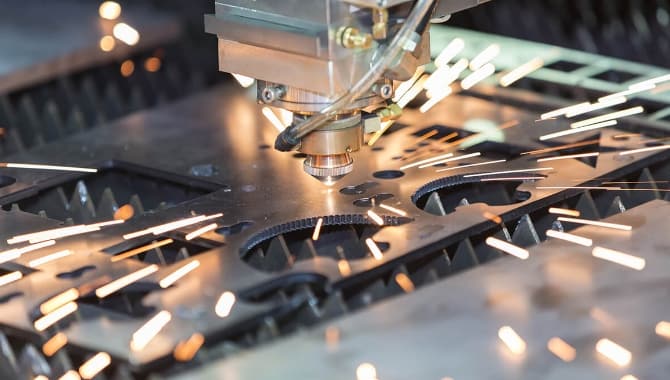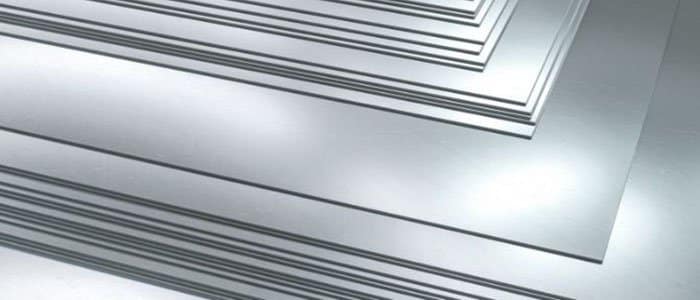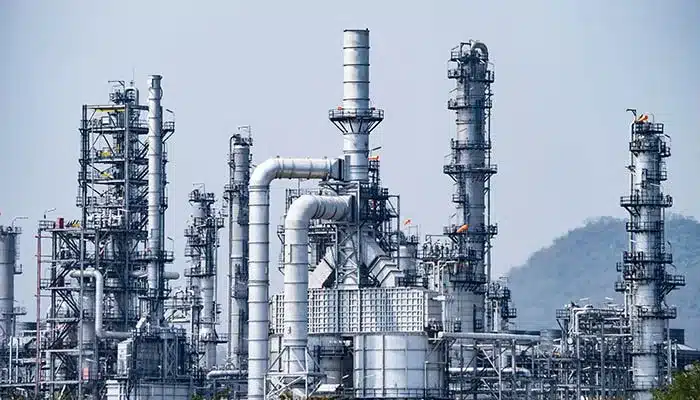Laser cutting has revolutionized the metal fabrication industry, offering unprecedented precision and efficiency.This comprehensive guide covers everything you need to know about this advanced technology.
How Laser Cutting Works
Laser cutting metal involves focusing a high-powered laser beam onto the material’s surface. The intense heat melts, burns, or vaporizes the metal, while a gas jet removes the molten material from the cut. This process creates clean, precise edges with minimal heat-affected zones, making it ideal for intricate designs and tight tolerances.

The Laser Cutting Process
The laser cutting process follows several key steps to ensure optimal results:
1. Design and Programming: The process begins with creating a digital design using CAD software. This design is then converted into a format that the laser cutting machine can understand.
2. Material Preparation: The metal sheet is selected and prepared, ensuring it’s clean and free from contaminants that could affect cutting quality.
3. Machine Setup: The laser parameters are configured based on the material type and thickness. This includes adjusting power, speed, and gas pressure.
4. Positioning: The metal sheet is precisely positioned on the cutting bed, often using automated systems for accuracy.
5. Cutting: The laser beam follows the programmed path, cutting through the metal with extreme precision. The assist gas blows away molten material, creating a clean cut.
6. Cooling and Inspection: After cutting, the material is allowed to cool, and the finished pieces are inspected for quality and accuracy.
Types of Lasers Used in Metal Cutting
Several types of lasers are commonly used in metal fabrication:
- CO2 Lasers: Suitable for cutting thicker metals and providing smooth edges.
- Fiber Lasers: More energy-efficient and ideal for cutting reflective metals like copper and brass.
- Nd:YAG Lasers: Excellent for high-precision applications and engraving.
What are the cutting tolerances for metal laser cutting?
The typical laser cutting tolerances for metals are:
For thin sheet metal (up to 1mm): +/- 0.1mm to +/- 0.2mm
For medium thickness sheet metal (1mm to 5mm): +/- 0.2mm to +/- 0.5mm
For thicker materials (over 5mm): +/- 0.5mm to +/- 1.0mm
Materials Suitable for Laser Cutting
Laser cutting is compatible with various metals, each offering unique properties:
- Stainless Steel: Offers excellent corrosion resistance and is ideal for medical equipment, food processing, and architectural applications.
- Carbon Steel: Provides strength and durability, making it perfect for structural components and machinery parts.
- Titanium: Known for its high strength-to-weight ratio and corrosion resistance, commonly used in aerospace and medical implants.
- Aluminum Alloys: Lightweight with good thermal conductivity, suitable for automotive and aerospace industries.
- Specialty Alloys: Including nickel alloys and tool steels, which offer specific properties for demanding applications.
Advantages of Laser Cutting Metal
Laser cutting offers numerous benefits over traditional cutting methods:
- Precision: Capable of achieving tolerances as tight as ±0.005 inches.
- Speed: Faster cutting speeds compared to plasma or waterjet cutting.
- Versatility: Can cut complex shapes and designs with minimal setup time.
- Quality: Produces clean edges with minimal burr, reducing the need for secondary finishing.
- Material Efficiency: Minimal material waste due to narrow kerf width.
Conclusion
Laser cutting technology has transformed metal fabrication, offering unmatched precision and efficiency. Whether you’re working with stainless steel, carbon steel, titanium, or specialized alloys, understanding the laser cutting process helps you make informed decisions for your projects.
As an experienced metal supplier, Daxun Alloy Co., Ltd. provides professional laser cutting services to customers from all over the world, meeting the diverse needs of customized products. If your project requires it, please contact us immediately and we will provide you with the best metal solution.




